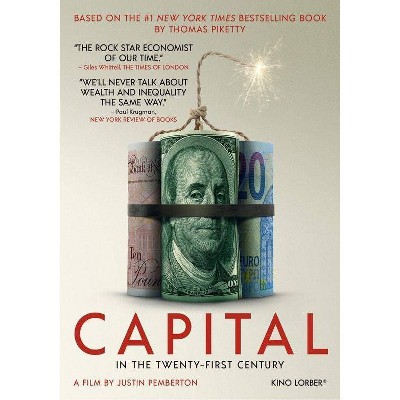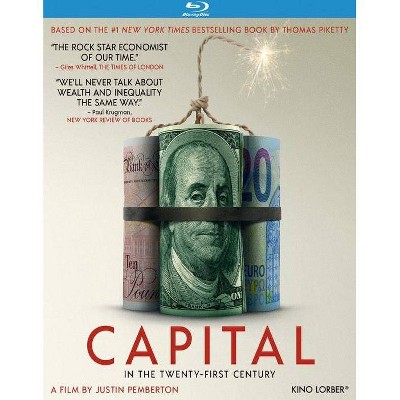Hidden Champions of the Twenty-First Century - by Hermann Simon (Paperback)

Similar Products
Products of same category from the store
AllProduct info
<p/><br></br><p><b> About the Book </b></p></br></br><p>"Hidden Champions" are the medium-sized, little-known companies that have quietly become world market leaders in their respective industries. This book chronicles the common patterns, behaviors and approaches of over one thousand of those hidden champions.</p><p/><br></br><p><b> Book Synopsis </b></p></br></br>Chapter 5: Customers, Products, Services . . . . . . . . . . . . . 129 Close Customer Relations . . . . . . . . . . . . . . . . . . . . . . . . . . . . . . . . . . 130 Customer Requirements. . . . . . . . . . . . . . . . . . . . . . . . . . . . . . . . . . . . 134 Dependence on the Customer and Risk Aspects . . . . . . . . . . . . . . . . . 135 Achieving Closeness to Customer . . . . . . . . . . . . . . . . . . . . . . . . . . . . 139 Product and Service Spectrum . . . . . . . . . . . . . . . . . . . . . . . . . . . . . . . 144 Summary. . . . . . . . . . . . . . . . . . . . . . . . . . . . . . . . . . . . . . . . . . . . . . . . 156 Chapter 6: Innovation . . . . . . . . . . . . . . . . . . . . . . . . . . . . . . . . . . 159 What Does Innovation Mean?. . . . . . . . . . . . . . . . . . . . . . . . . . . . . . . 159 High Level of Innovativeness . . . . . . . . . . . . . . . . . . . . . . . . . . . . . . . . 163 Driving Forces of Innovation . . . . . . . . . . . . . . . . . . . . . . . . . . . . . . . . 172 The Origin of Innovations. . . . . . . . . . . . . . . . . . . . . . . . . . . . . . . . . . 176 Leadership and Organizational Aspects of Innovation . . . . . . . . . . . . 179 Summary. . . . . . . . . . . . . . . . . . . . . . . . . . . . . . . . . . . . . . . . . . . . . . . . 187 Chapter 7: Competition . . . . . . . . . . . . . . . . . . . . . . . . . . . . . . . . 191 Competitive Structure and Conduct . . . . . . . . . . . . . . . . . . . . . . . . . . 191 The Hidden Champions in the Light of Porter's "Five Forces" . . . . . 195 Competitive Advantages. . . . . . . . . . . . . . . . . . . . . . . . . . . . . . . . . . . . 197 Sustainability of Competitive Advantages . . . . . . . . . . . . . . . . . . . . . . 203 Demonstration of Competitive Superiority . . . . . . . . . . . . . . . . . . . . 205 Competitive Edge and Costs . . . . . . . . . . . . . . . . . . . . . . . . . . . . . . . . 207 Sparring Partners for Competitive Fitness . . . . . . . . . . . . . . . . . . . . . . 214 Excessive Competitive Orientation . . . . . . . . . . . . . . . . . . . . . . . . . . . 217 Summary. . . . . . . . . . . . . . . . . . . . . . . . . . . . . . . . . . . . . . . . . . . . . . . . 218 Chapter 8: Financing, Organization, and Business Environment . . . . . . . . . . . . . . . . . . . . . . . . . . . . . . . . . . . . . . . . . . . 223 Financing . . . . . . . . . . . . . . . . . . . . . . . . . . . . . . . . . . . . . . . . . . . . . . . 224 Organization . . . . . . . . . . . . . . . . . . . . . . . . . . . . . . . . . . . . . . . . . . . . . 228 Contents ix Organization of the Value Chain . . . . . . . . . . . . . . . . . . . . . . . . . . . . . 237 Business Environment . . . . . . . . . . . . . . . . . . . . . . . . . . . . . . . . . . . . . 249 Entrepreneurial Clusters. . . . . . . . . . . . . . . . . . . . . . . . . . . . . . . . . . . . 251 Summary. . . . . . . . . . . . . . . . . . . . . . . . . . . . . . . . . . . . . . . . . . . . . . . . 253 Chapter 9: Employees . . . . . . . . . . . . . . . . . . . . . . . . . . . . . . . . . 257 Job Creation . . . . . . . . . . . . . . . . . . . . . . . . . . . . . . . . . . . . . . . . . . . . . 257 Corporate Culture . . . . . . . . . . . . . . . . . . . . . . . . . . . . . . . . . . . . . . . . 260 Quali?cations and Learning . . . . . . . . . . . . . . . . . . . . . . . . . . . . . . . . . 274 Creativity of Employees . . . . . . . . . . . . . . . . . . . . . . . . . . . . . . . . . . . . 278 Recruiting . . . . . . . . . . . . . . . . . . . . . . . . . . . . . . . . . . . . . . . . . . . . . . . 279 Summary. . . . . . . . . . . . . . . . . . . . . . . . . . . . . . . . . . . . . . . . . . . . . . . . 282 Chapter 10: The Leaders . . . . . . . . . . . . . . . . . . . . . . . . . . . . . . . 285 Structures of Ownership and Leadership . . . . . . . . . . . . . . . . . . . . . . 286 How Crucial Is Leadership? . . . . . . . . . . . . . . . . . . . . . . . . . . . . . . . . . 289 Leadership Continuity . . . . . . . . . . . . . . . . . . . . . . . . . . . . . . . . . . . . . 289 Young to the Top . . . . . . . . . . . . . . . . . . . . . . . . . . . . . . . . . . . . . . . . . 293 Powerful Women . . . . . . . . . . . . . . . . . . . . . . . . . . . . . . . . . . . . . . . . . 294 Internationalization of Management . . . . . . . . . . . . . . . . . . . . . . . . . . 298 Personalities . . . . . . . . . . . . . . . . . . . . . . . . . . . . . . . . . . . . . . . . . . . . . 300 Leadership Styles . . . . . . . . . . . . . . . . . . . . . . . . . . . . . . . . . . . . . . . . . 305 Management Succession . . . . . . . . . . . . . . . . . . . . . . . . . . . . . . . . . . . . 306 Summary. . . . . . . . . . . . . . . . . . . . . . . . . . . . . . . . . . . . . . . . . . . . . . . . 310 Chapter 11: Hidden Champions: Audit and Strategy Development . . . . . . . . . . . . . . . . . . . . . . . . . . . . . . . . . . . . . . . . . . 315 What Is Strategy? . . . . . . . . . . . . . . . . . . . . . . . . . . . . . . . . . . . . . . . . . 316 Hidden Champion Strategy: For Whom? . . . . . . . . . . . . . . . . . . . . . . 316 Hidden Champions - Audits . . . . . . . . . . . . . . . . . . . . . . . . . . . . . . . . 317 Strategy Development . . . . . . . . . . . . . . . . . . . . . . . . . . . . . . . . . . . . . 325 Strategies for Value Propositions and Pricing . . . . . . . . . . . . . . . . . . . 335 Organization and Implementation . . . . . . . . . . . . . . . . . . . . . . . . . . .<p/><br></br><p><b> From the Back Cover </b></p></br></br><p>What do Tetra aquarium supplies, Elector-Nite sensors, and Nissha touch panels have in common? They are typical "hidden champions," medium-sized, unknown companies (with annual revenues under $4 billion) that have quietly, under the radar, become world market leaders in their respective industries. Hermann Simon has been studying these hidden champions for over 20 years, and in this sequel to his worldwide bestseller, <em>Hidden Champions</em>, he explores the dramatic impact of globalization on these companies and their outstanding international success. Going deep inside more than a thousand hidden champions around the world, Simon reveals the common patterns, behaviors, and approaches that make these companies successful, and, in many cases, able to sustain world market leadership for generations, despite intense competition, financial pressures, and constantly evolving market dynamics. In the tradition of <em>In Search of Excellence</em>, <em>Built to Last</em>, and <em>Good to Great</em>, Simon identifies the factors in business operations, customer service and marketing, innovation, human resources management, organizational design, leadership, and strategy that separate these outstanding performers from the rest of the pack - and from the large corporations of the day. In the process, he provides a glimpse behind the curtains of many secretive companies who buck today's management fads, and succeed instead through such common-sense strategies as focusing on core capabilities, delivering real value to the customer, establishing long-term relationships, innovating continuously, rewarding employees for performance, decentralized operations, and developing an unparalleled global presence. Hidden champions teach us that good management means doing many small things better than the competition--quietly, with determination, commitment, and never-ending stamina. And in turbulent economic times, the hidden champions represent an antidote to the short-sighted and excessive practices that have brought many corporate giants crashing down. The hidden champions provide invaluable lessons for all stakeholders in the business community, from entrepreneurs to corporate managers, investors to employees, union organizers to regulators, advanced and emerging countries and may well serve as the new role models for sustainable economic growth in the globalized world of the future.</p><p/><br></br><p><b> Review Quotes </b></p></br></br><br><p>From the reviews: </p><p>"Hermann Simon's detailed study of Hidden Champions is phenomenal in its depth and rich coverage. These mid-size leaders carry lessons for large, medium, and small companies about the importance of focus, quality, service, innovation, and closeness to the customer, lessons that many of our largest Fortune 500 companies have forgotten." (Philip Kotler, S. C. Johnson & Son Distinguished Professor of International Marketing, Kellogg School of Management, Northwestern University)</p><p>"This book shows that the Hidden Champions of the 21st Century go their own ways. This exactly is their success secret." (Hans Riegel, Managing Director and Co-Owner, Haribo)</p><p>"The Hidden Champions prove that even management in the 21<sup>st</sup> Century should be based on healthy common sense. By improving upon the small things every day, a company can ascend to world market leadership." (Reinhold Wuerth, Chairman of the Board, Wuerth Group, World Market Leader in Assembly Products)</p><p>"The Hidden Champions go their own way. The secret to their success is common sense, vision and flexibility - qualities that aren't easy to find." (The Wall Street Journal)</p><p>"In Simon's viewpoint, resistance to management fads is a strength, not a weakness. For decades the best companies have been thriving by eschewing complexity, avoiding diversification and focusing on their core skills. The rest of the world is only beginning to catch up." (The Economist)</p><p>"'Hidden champions' are virtually unknown to the public. ... What is the secret to their success and uniqueness? Hermann Simon has been researching and dissecting these companies and their strategies for over 20 years. ... The targets of hidden champions are aimed at growth and market leadership. ... Hidden champions have created new competitive advantages in the form of advice and systems integration. ... hidden champions of the 21st century follow their own path - and do so with more decisiveness and success than ever before." (German American Trade, September-October, 2009)</p><p>"Hidden Champions of the 21st Century: Lessons from 500 of the World's Best Unknown Companies by Hermann Simon highlights low profile global businesses ... leaders in their given markets. Simon, a visiting Professor at Harvard, claims that there is more to be learned from these 'hidden' companies than those in the media limelight. The book is written for those who have a good grasp of management theory ... ." (Anoop Maini, Professional Manager, Vol. 18 (5), September, 2009)</p><p>"Hermann Simon has been studying 'Hidden champions' for more than twenty years ... . he mainly focuses on the influence of globalisation on these companies. 'Hidden champions' are medium-sized, unknown companies that have become the market leaders in their industries. ... 'Hidden champions' focus more on service, the needs and wants of customers and on excellent performance ... . This book was written for those who are interested in international business operations and for mangers of all types of companies ... ." (Supply Chain Movement, October, 2009)</p><p>"This is a book that deserves careful study. ... The material covered reinforces and confirms the evidence that underpins the author's original identification of the hidden champions. ... This book is a welcome and timely reminder of the need to get back to basics reinforced by numerous documented examples that demonstrate incontrovertibly and organisations that do so are most likely to succeed in achieving their goals." (Michael J. Baker, Journal of Customer Behaviour, Vol. 8 (4), 2009)</p><p>"Must read book for growth firms wanting to dominate their industry is Hermann Simon's Hidden Champions of the 21st Century. ... Hermann Simon notes, based on his research of the world's top mid-market companies, that they almost always set-up wholly owned subsidiaries vs. licensing or joint venture relationships." (Ceo Brain Trust, January, 2010) </p><p>"Throughout his book, Simon demonstrates how these and other hidden champions are able to focus and capture market share under the radar. ... Wrapping up Hidden Champions of the 21st Century with a clear description of the many lessons that can be learned from the hidden champions of the world, Simon goes beyond cheerleading for these marvelous companies and leads the way for other businesses to transform themselves into champions with a practical, advice-filled guide." (Soundview Executive Book Summaries, March, 2010) </p><p>"An academic tome, Hidden Champions of the Twenty-First Century reads very much as a sequel and follow-up to an earlier work. ... The majority of this volume is taken with explaining and illustrating features of the various 'Hidden Champions', and the world markets around them, with allusions that the study is on how these companies adapt and grow into a changing and changed world. ... thought-provoking book, and one I would recommend to business students, or the self-taught in the business world." (LibraryThing, December, 2009) </p><p>"The book full of interesting ideas and very thought provoking. If you have or are planning a business of your own this will definitely give you ideas about looking for your niche and after finding it how to grow in it ... ." (LibraryThing, December, 2009) </p><p>"This is a follow up to the author's earlier research published as Hidden Champions. He studies companies which are market leaders and ... in many cases secretive companies. ... I am a business analyst and adviser, this book is the rare business book which will have an immediate value to my consulting work in the insights and perspective it offers on how to build long lasting, profitable companies." (LibraryThing, February, 2010) </p><p>"A very thorough review of the 'hidden champion' marketspace. The author clearly knows this subject very well and covers all aspects of it. The topics are well discussed, with summaries and extensive notes for each chapter. The book is mainly written for the enterprise-level decision maker." (LibraryThing, February, 2010) </p><p>"As someone who is looking to start my own business this was an interesting read. It looks at the strategies, operations, and leadership of some of the world's most successful companies ... . A must read for anyone interested in business management - should probably be read by many top executives today." (GoodReads, March, 2010)</p><p>"It is primarily a reference work ... . you can ... pick and choose your reading from the chapter headings. I'd recommend this book to business consultants, operating officers, small business owners, and anyone else that would like to see their business reach its potential." (LibraryThing, November, 2010) </p><p>"Interesting book that is very similar in premise to Good to Great: Why Some Companies Make the Leap... and Others Don't, but focused on usually smaller and mostly European companies. The conclusions are well reasoned and documented and the lessons one can gain from this book are easily discoverable. ... It still could be a valuable addition to your business library ... ." (Mike Klein, Goodreads, July, 2010)</p><br><p/><br></br><p><b> About the Author </b></p></br></br><p>Hermann Simon is Chairman of Simon-Kucher & Partners, Strategy & Marketing Consultants, with 18 offices in Europe, Asia, and the United States. He is an expert in strategy, marketing and pricing, advising clients and speaking to business organizations worldwide. Prior to taking on consulting full-time, he was a professor of business administration and marketing at the Universities of Mainz and Bielefeld, and has served as a visiting professor at many universities, including Harvard Business School, London Business School, INSEAD, Keio University, Stanford, and MIT. Named one of Europe's most influential management thinkers, he has served on the boards of numerous journals, including the <i>International Journal of Research in Marketing</i>, <i>Management Science</i>, and <i>European Management Journal</i>, and has published over 30 books, including the worldwide bestseller, <i>Hidden Champions</i> (1996), <i>Power Pricing</i> (1997), and <i>Manage for Profit, Not for Market Share </i>(2006). </p><p>
Price History
Price Archive shows prices from various stores, lets you see history and find the cheapest. There is no actual sale on the website. For all support, inquiry and suggestion messages communication@pricearchive.us




















